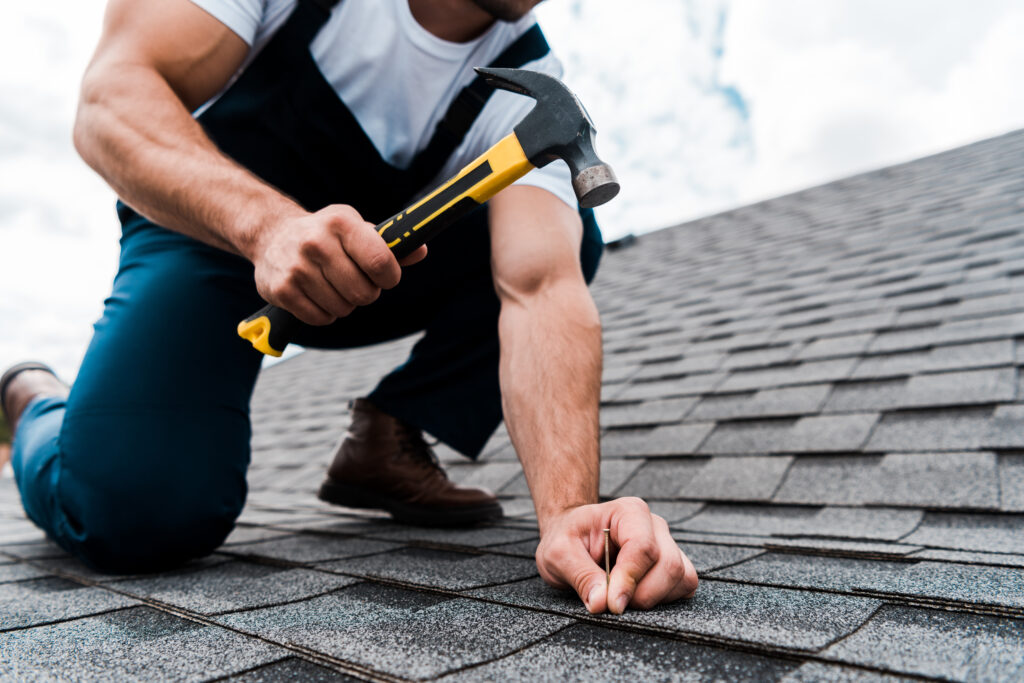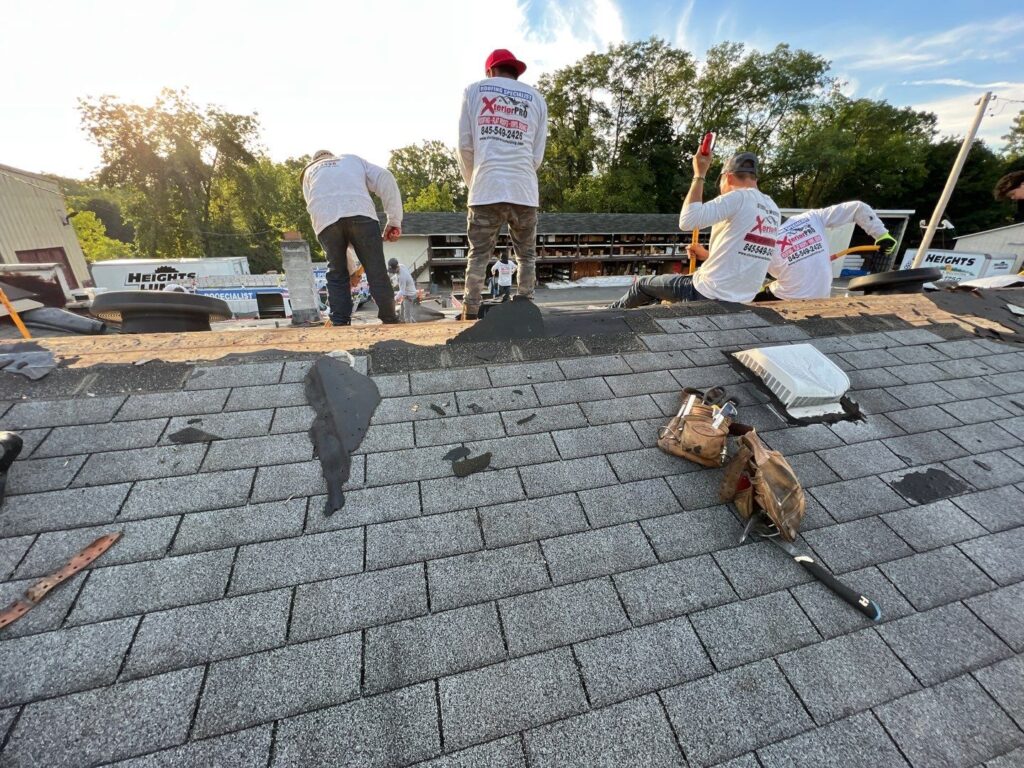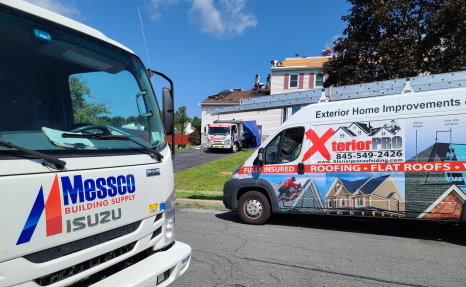


How to Identify Storm Damage on Your Roof: A Homeowner's Checklist
24 Hour Service • Financing Options • GAF Certified
Quick Estimate Request
How to Identify Storm Damage on Your Roof: A Homeowner's Checklist
Published 9/12/2024
Storms are one of the most common causes of damage to residential roofs, and understanding how to properly identify storm-related issues is crucial for protecting your home. Whether it’s high winds, hail, or heavy rain, each storm brings unique risks that can compromise the integrity of your roof.
Identifying storm damage early can prevent costly repairs down the road and safeguard your home from leaks, structural damage, and more. In this comprehensive guide, we’ll walk you through how to spot different types of storm damage and provide helpful tips for inspecting your roof safely after a storm.
Why Identifying Roof Damage Early is Important
Your roof serves as your home’s first line of defense against the elements. If it’s damaged, water can seep into your home, leading to mold growth, interior water damage, and even structural issues. Often, homeowners don’t realize the full extent of damage until months after the storm, when the issues have worsened and repair costs have skyrocketed. That’s why it’s essential to perform a thorough inspection as soon as it’s safe after a storm passes.
Early detection not only helps prevent extensive damage but can also support you in filing a timely insurance claim. Most insurance companies require claims to be filed within a certain period after the damage occurs. By understanding what to look for and acting quickly, you can protect your home and make the most of your insurance coverage.

Safety First: Inspecting Your Roof Safely After a Storm
Before we dive into what to look for, let’s talk about safety. Inspecting a roof immediately after a storm can be dangerous, especially if there’s been significant damage. Always prioritize your safety. Here are a few key safety tips to keep in mind:
- Wait for the Storm to Completely Pass: Do not attempt to inspect your roof while there’s still bad weather or high winds. Wait until conditions have completely stabilized.
- Stay on the Ground: Instead of climbing onto your roof, try using binoculars to inspect from the ground. You can spot many visible issues from below.
- Look for Hazards: Be cautious of fallen power lines, loose shingles, and debris on your property.
- Consider Hiring a Professional: If you suspect significant damage or are unsure about the condition of your roof, it’s best to contact a roofing professional for a thorough inspection. They have the proper equipment and expertise to inspect your roof safely.
Steps to Take After Identifying Storm Damage
Once you’ve identified signs of storm damage on your roof, it’s important to act quickly. Here’s a step-by-step guide to what you should do next:
Document the Damage: Take photos and videos of the damage from multiple angles. This will be essential if you need to file an insurance claim. Be thorough in documenting both obvious and subtle signs of damage, including missing shingles, dents, leaks, and any damage to your home’s exterior.
Contact a Professional Roofer: While a visual inspection can help you identify surface-level damage, only a professional roofer can assess the full extent of the damage. Contact a reputable roofing contractor as soon as possible for a professional inspection and repair estimate.

File an Insurance Claim: If the damage is significant, you may need to file a claim with your homeowner’s insurance. Provide them with the photos and documentation you’ve gathered, and ask your roofer for assistance in providing a detailed estimate of the necessary repairs. Many roofing contractors will work directly with your insurance company to streamline the process.
Prevent Further Damage: If your roof has sustained major damage, it’s important to take steps to prevent further issues. Tarping over large holes or gaps can help minimize water damage until repairs can be made. Your roofer may also be able to provide emergency patching services to secure your home until a full repair can be scheduled.
Types of Storm Damage to Look For
Different types of storms bring different kinds of risks to your roof. Below, we’ll cover the most common types of storm-related damage, including high winds, hail, and heavy rain.
Wind Damage
High winds can cause serious damage to your roof, especially during hurricanes, tornadoes, or severe thunderstorms. Wind damage is often less obvious than other types of damage but can be equally destructive if left unaddressed. Here’s what to look for:
Missing or Loose Shingles: Wind can lift and even tear off shingles, leaving your roof exposed to water damage. Look for bare spots where shingles are missing or for shingles that are misaligned or lifted at the edges. Even if the shingles are still in place, if they’ve been lifted, water can get underneath them and cause damage over time.
Creased or Curled Shingles: Shingles that are creased or curled upward are a sign that the wind has gotten under them. This weakens the roof’s defense and increases the likelihood of leaks.
Debris on the Roof: Strong winds often carry debris, such as branches and other objects, that can hit your roof and cause damage. Look for signs of impact marks or debris lodged on the roof.
Damaged Flashing: Flashing around chimneys, vents, or skylights can be loosened or torn off by high winds, compromising these vulnerable areas. Inspect these spots closely.
Hail Damage
Hailstorms are notorious for causing significant damage to roofs. Hailstones vary in size, and even smaller hailstones can cause damage, especially if they fall with enough force. Here’s how to identify hail damage:
Dented Shingles: Hail often leaves behind visible dents or dimples on asphalt shingles. If the shingles have granules, these dents might expose the underlying asphalt layer, leading to accelerated wear and tear.
Granule Loss: Asphalt shingles are coated with granules that protect the shingles from UV damage. Hail can knock these granules off, leaving behind bald spots. Check for excessive granules in your gutters or downspouts, as this is a tell-tale sign of hail damage.
Cracked or Fractured Shingles: In more severe hailstorms, the impact can crack or fracture shingles. Look for shingles that appear split or shattered, as this indicates significant damage that needs immediate repair.
Metal Damage: If your roof has metal components such as vents, gutters, or flashing, hail can cause visible dents and damage to these areas. Check for dents in the metalwork around your roof as an additional indicator of hail damage.
Water Damage and Leaks
Heavy rain during storms can lead to water damage, particularly if your roof already has vulnerabilities like loose shingles or damaged flashing. Water damage can be subtle at first but can escalate quickly if left unattended. Here’s what to look for:
Leaking or Water Stains: One of the most obvious signs of water damage is leaks inside your home. After a heavy rainstorm, inspect your attic and ceilings for water stains or active leaks. Any discoloration or bubbling paint can indicate moisture has gotten in.
Clogged or Overflowing Gutters: Heavy rain can overwhelm gutters, especially if they’re clogged with debris. This can lead to water spilling over the sides and pooling around your roofline, increasing the risk of water seeping into the structure. Check your gutters for blockages and signs of water damage along the roof’s edge.
Soggy or Waterlogged Areas: Water damage can sometimes cause parts of the roof to become soggy or weakened. Walk around the perimeter of your home and look for sagging rooflines or areas where the roof seems to be uneven or waterlogged.
Impact Damage
In severe storms, flying debris like tree branches or objects carried by strong winds can impact your roof, causing significant damage. Impact damage is often more visible and can require immediate attention. Here’s what to watch for:
Broken Shingles: If debris has fallen on your roof, it can break or crack the shingles. Large branches or objects can puncture the roof entirely, leaving holes that require emergency repairs.
Cracked or Dented Skylights: Skylights are particularly vulnerable during storms, as they can be cracked or shattered by flying debris or hail. Inspect skylights for any signs of impact, such as cracks, chips, or broken seals.
Damaged Roof Decking: In cases of severe impact, the roof decking—the wooden layer beneath the shingles—can be damaged. This is harder to detect visually, but if you notice sagging areas or water entering your attic, it could indicate decking damage.
Protect Your Home by Being Proactive
Identifying storm damage on your roof as soon as possible is essential for preventing further issues and protecting your home from long-term damage. By knowing what to look for—whether it’s wind damage, hail damage, or water infiltration—you can take swift action to address problems before they worsen.
Always prioritize safety when inspecting your roof, and don’t hesitate to call in a professional roofer to assess the full extent of the damage. With prompt attention and the right repairs, your roof will continue to protect your home for years to come.
By following this checklist after every major storm, you’ll stay on top of your roof’s condition and avoid the costly pitfalls that come from undetected damage. Your roof is a critical part of your home’s structure, and maintaining it is key to ensuring the safety and value of your property.
In-House Staff
Our employees are in-house.
You Deserve the Best
Check out our reviews!
Customers First!
Customer-focused solutions.
Xterior PRO Roofing & Siding, LLC
Financing Available
24/7 Emergency Availability
Certified by GAF & Owens Corning
We Work With your Insurance!
Areas Serviced
- HQ: Newburgh, NY
- Beacon, NY
- Cornwall, NY
- Fishkill, NY
- Middletown, NY
- Monroe, NY
- New Paltz, NY
- New Windsor, NY
- Poughkeepsie, NY
- Wallkill, NY
- Wappingers Falls, NY
- Warwick, NY





